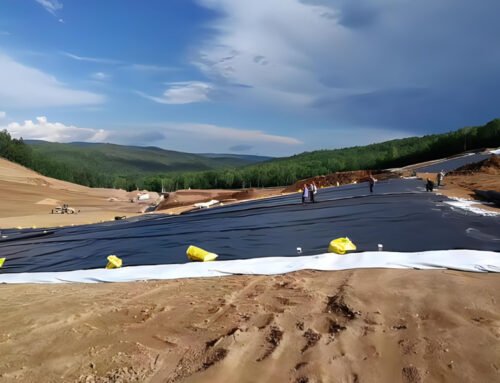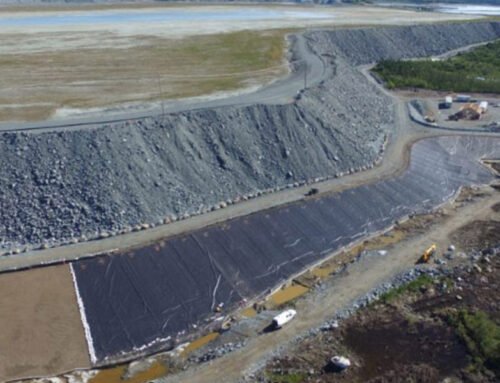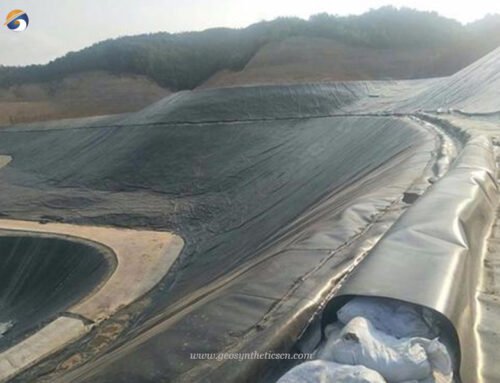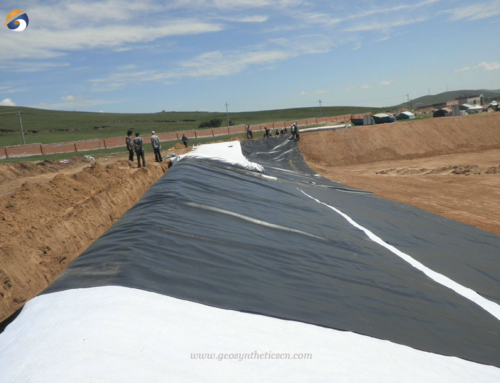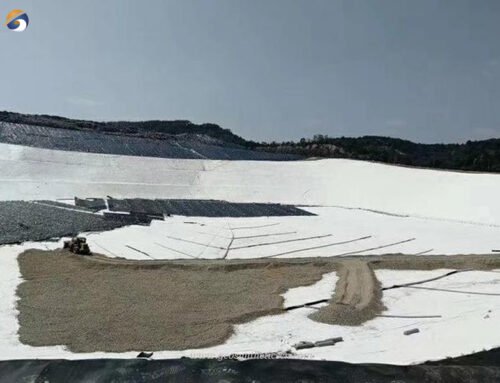Indonesia’s Jakarta faces increasing road damage due to traffic and loads. Repairing old concrete pavements is challenging compared to asphalt. Asphalt overlays on old concrete help but reflection cracks remain a problem. These cracks expand quickly due to environmental factors, shortening the surface life. To slow crack reflection, Indonesian researchers chose geogrid fabric for repairs. Our Fiberglass Geogrid Fabric is well-regarded in Indonesia and used by local builders. Our fiberglass geogrid is made from high-quality alkali-free glass yarn, woven on advanced machines, enhancing strength and durability. It’s coated with modified asphalt for better wear and shear resistance, solving pavement issues like cracks and ruts.

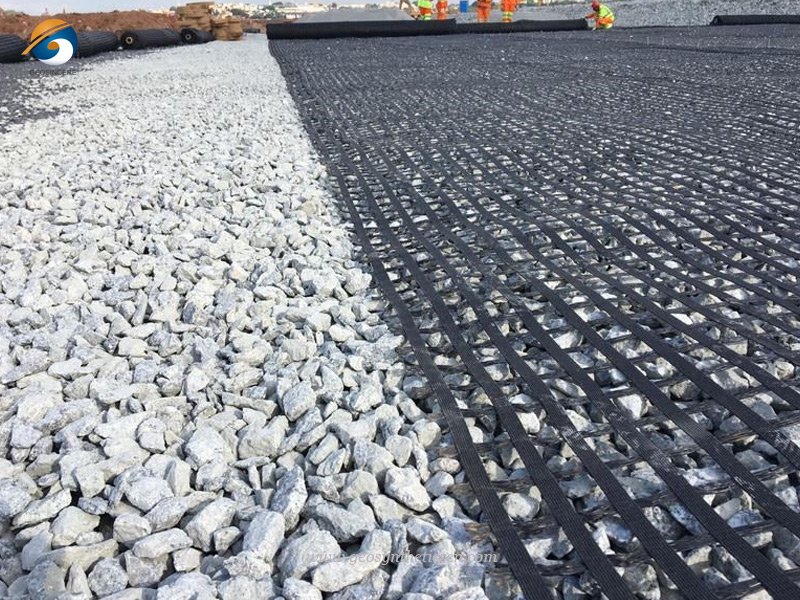
1 Specifications of Fiberglass Geogrid Fabric for Road Construction Project in Indonesia
- Total fiberglass geogrid fabric quantity – 56,000 square meters
- Specification – 100KN/30KN
- Roll Size – 4m * 100m
2 What is the Purpose of the Fibergalss Geogrid Fabric?
Fiberglass geogrid is utilized in the asphalt surface layer, acting as a structural framework and creating a composite mechanical interlocking system. This enhances the lateral binding force and promotes interlocking between different parts of the asphalt surface layer.
2.1 Fiberglass Geogrid Fabric – Mitigate reflection cracks
Reflective cracks form due to stress from old concrete displacement near joints or cracks. Temperature, humidity changes, and traffic loads cause horizontal displacement, leading to tensile stress in the asphalt overlay. Vertical shear displacement from traffic causes flexural tensile and shear stress in the overlay. The high modulus (67Gpa) of ten-gong fiberglass geogrid makes it a rigid interlayer in the asphalt overlay, restraining stress and releasing strain. It also reinforces asphalt concrete, improving the overlay structure and reducing tensile and shear resistance to minimize cracks. Practice shows that reinforcing materials over 1.5 meters wide can dissipate crack energy completely on both sides, moving the starting point of a horizontal crack 0.6 meters away.
2.2 Fiberglass Geogrid Fabric – Anti-fatigue cracking
The asphalt overlay on old concrete mainly improves function, not bearing strength. The rigid concrete below still supports most loads. On old asphalt, the overlay shares the load. Long-term loading causes fatigue cracks. Stress analysis shows wheel-contacted areas compress, edges tense. This stress difference near the junction causes damage and fatigue cracks over time. Glassfiber geogrid in asphalt layers disperses stress, creating a gradual change buffer zone, reducing abrupt stress shifts and surface destruction. Its low stretch also minimizes pavement deflection, preventing deformation.
2.3 Fiberglass Geogrid Fabric – High temperature rutting
In summer, asphalt roads soften and become sticky due to high temperatures. Vehicle loads cause indentations that don’t fully recover, leading to ruts over time from repeated rolling. The lack of restriction on aggregate movement in hot asphalt contributes to rut formation. Fiberglass geogrids in overlays act as a skeleton, interlocking with aggregates to restrict movement and enhance lateral support, thus preventing ruts.
2.4 Fiberglass Geogrid Fabric – Resistance to low temperature shrinkage cracking
On asphalt roads in severe cold areas, the temperature of the road surface in winter is close to the air temperature. Under such temperature conditions, the asphalt concrete shrinks when cold, resulting in tensile stress. When the tensile stress exceeds the tensile strength of asphalt concrete, cracks will occur, and cracks will occur in the places where the cracks are concentrated, resulting in diseases. From the perspective of the causes of cracks, how to make the strength of asphalt concrete resist the tensile stress is the key to solving the problem.
2.5 Fiberglass Geogrid Fabric – Mechanism of glass fiber grating to prevent reflection cracks
Fiberglass geogrid fabric is used in urban asphalt road reconstruction to prevent crack reflection, reduce rutting, and extend road life. It’s placed on old asphalt and concrete pavements before the new surface layer. The geogrid enhances tensile strength, improves stress distribution, and mitigates reflective cracks, thereby prolonging pavement lifespan.

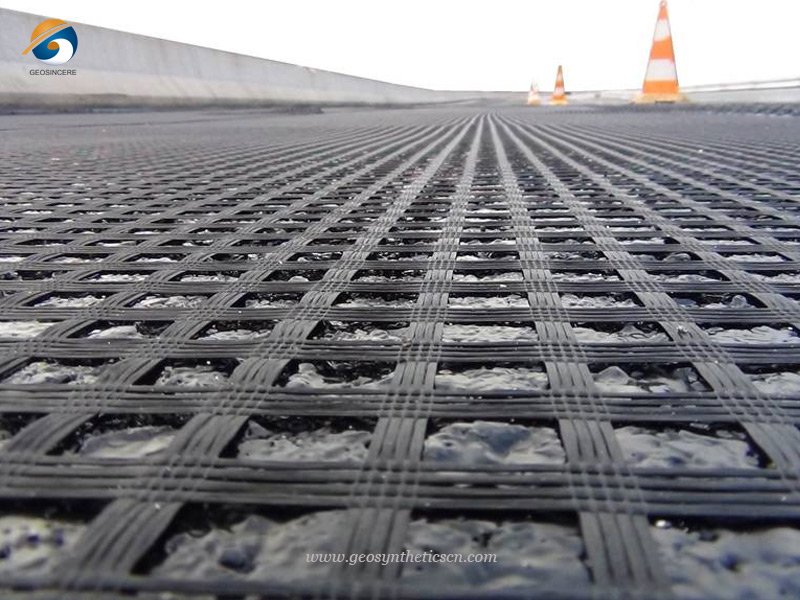
3 Construction Technology of Fiberglass Geogrid Fabric Indonesia
3.1 The external principle of pavement
The use effect of glass fiber geogrid is closely related to the treatment of pavement. Before laying, the substances on the pavement that may affect the bonding strength of the grating and the bottom layer, such as grease, paint, sealing material, water stains, dirt, etc., must be thoroughly cleaned. Clean and dry the paved surface.
3.2 Laying and fixing of fiberglass grating
The grating can be laid by tractors or special equipment modified by automobiles, or manually. The two ends of the paper tube of each roll of fiberglass grating are marked with orange and blue marks. Before starting to lay, the glue side should be downward. , Make sure that the above marking colors are at one end, so as to facilitate the construction and avoid laying the glue surface wrong. When the grille is laid, it should be kept flat and taut, without wrinkling, so that the grille has effective tension, and then roll it again with a clean drum roller after laying.
At present, there are two kinds of glass fiber gratings with self-adhesive and without self-adhesive.
Indonesian customers use fiberglass grating without self-adhesive.
The materials required for fixing are:
①50x50x0.3mm fixed iron sheet, it is required to be flat and not warped, and the periphery should be chamfered
②2 inch steel nails.
When laying fiberglass grating by Zhoudinggang method, first secure one end with steel nails on the asphalt base. Tighten longitudinally and fix in 2-5m sections, aligning with shrinkage joints. Ensure fibers are straight and tensed. Avoid nailing directly into the grid or hitting it with a hammer. After fixing, check for broken nails or loose iron sheets and re-secure if necessary. Finally, glue and roll to bond the grille firmly with the road layer.
About GEOSINCERE
As the professional geosynthetics manufacturer and wholesaler, GEOSINCERE is always committed to geotextile research and development, manufacturing and installation services. We can provide our customers with most extensive lines of geotextiles and geomembranes for civil, mining, environmental and aquaculture engineering applications.
Our main innovative, high quality products include geotextiles, geomembranes, geogrids, geocells, geosynthetic clay Liner, and drainage boards, etc al.
GEOSINCERE offers both high quality geosynthetic products but also professional design and installation service. OEM, ODM, custom development and fabrication are also available. If you have any questions or inquiries, please contact us, we will reply as soon as possible.

